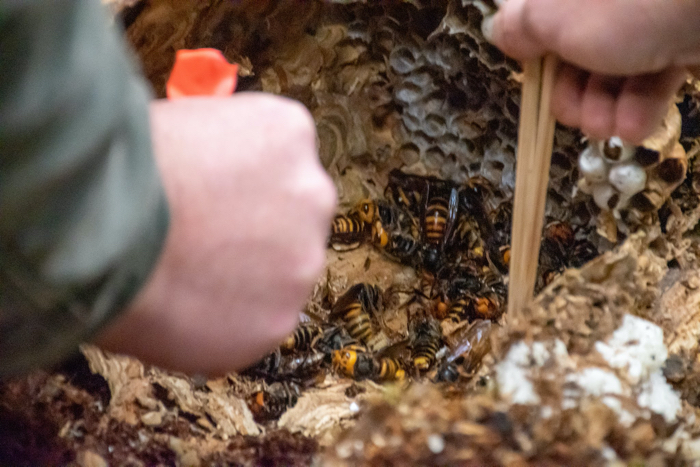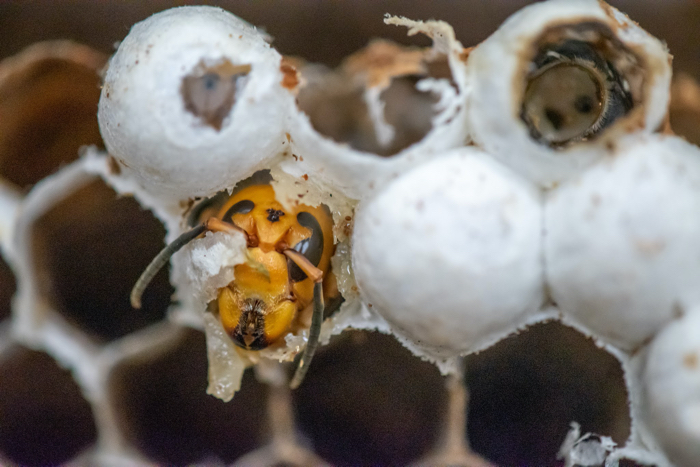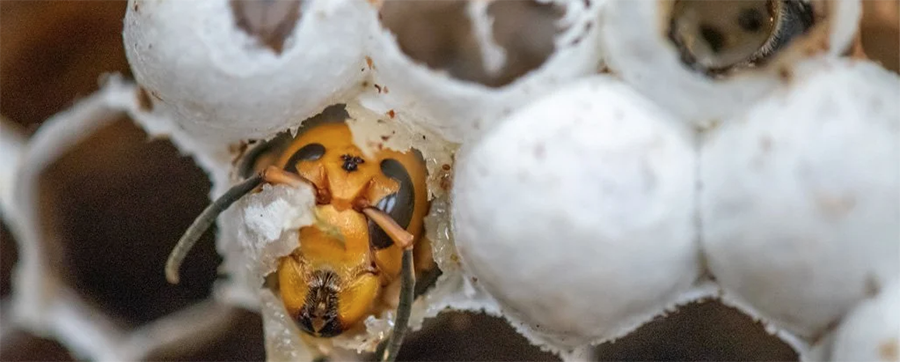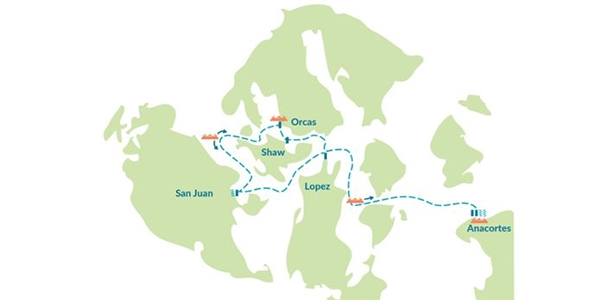||| FROM SCIENCE ALERT |||
After months of searching, in October scientists located and destroyed the first nest of giant ‘murder hornets’ ever discovered in the US, eradicating a hidden enclave of the invasive insects concealed in a tree in Washington State, close to the Canadian border.
While the discovery and elimination of the nest is considered a victory by state and federal authorities – who are striving to prevent the Asian giant hornet from establishing a foothold in North America – a post-mortem of the hornets’ former home provides a sobering perspective on the scale of the bug threat we’re up against.
After tracking down the nest with an ingenious radio tag ploy, entomologists from the Washington State Department of Agriculture (WSDA) vacuumed dozens of hornets out of the tree in which it was found, then cut the tree open to reveal the nest hidden inside, measuring about 35 centimetres long and 23 centimetres wide (14 by 9 inches).
 (WSDA)
(WSDA)
That might not sound too large, but it turns out it’s capacious enough to barrack a veritable army of murder hornets, capable of spawning a significant wave of subsequent invasion and colonisation.
Inside the nest, the researchers tallied 76 adult queens. Almost all but one of these were likely virgin queens – imminent matriarchs which eventually emerge from the nest, mate, and then leave the area to start a new colony elsewhere after winter has passed.
In addition, 108 capped cells with pupae were found, most of which the entomologists think would also have been virgin queens in development.
 (WSDA)
(WSDA)
In other words, this one single nest – which took months for authorities to track down – contained the seeds of around 200 potential new colonies, if nature were to have had its way and scientists hadn’t intervened.
“We got there just in the nick of time,” WSDA entomologist Sven-Erik Spichiger told media during a virtual press conference on the developments.
**If you are reading theOrcasonian for free, thank your fellow islanders. If you would like to support theOrcasonian CLICK HERE to set your modestly-priced, voluntary subscription. Otherwise, no worries; we’re happy to share with you.**








Well done WSDA!
It would be great if this were the only murder hornet nest on the mainland, but we don’t know that — unless these hornets stop appearing. If there’s another nest out there that WSDA did not track down, god help us, for this example suggests how many queens they may eventually have to deal with.
Science media plays such an important role. More of this breathless hyperbole and we can polarize entomology.